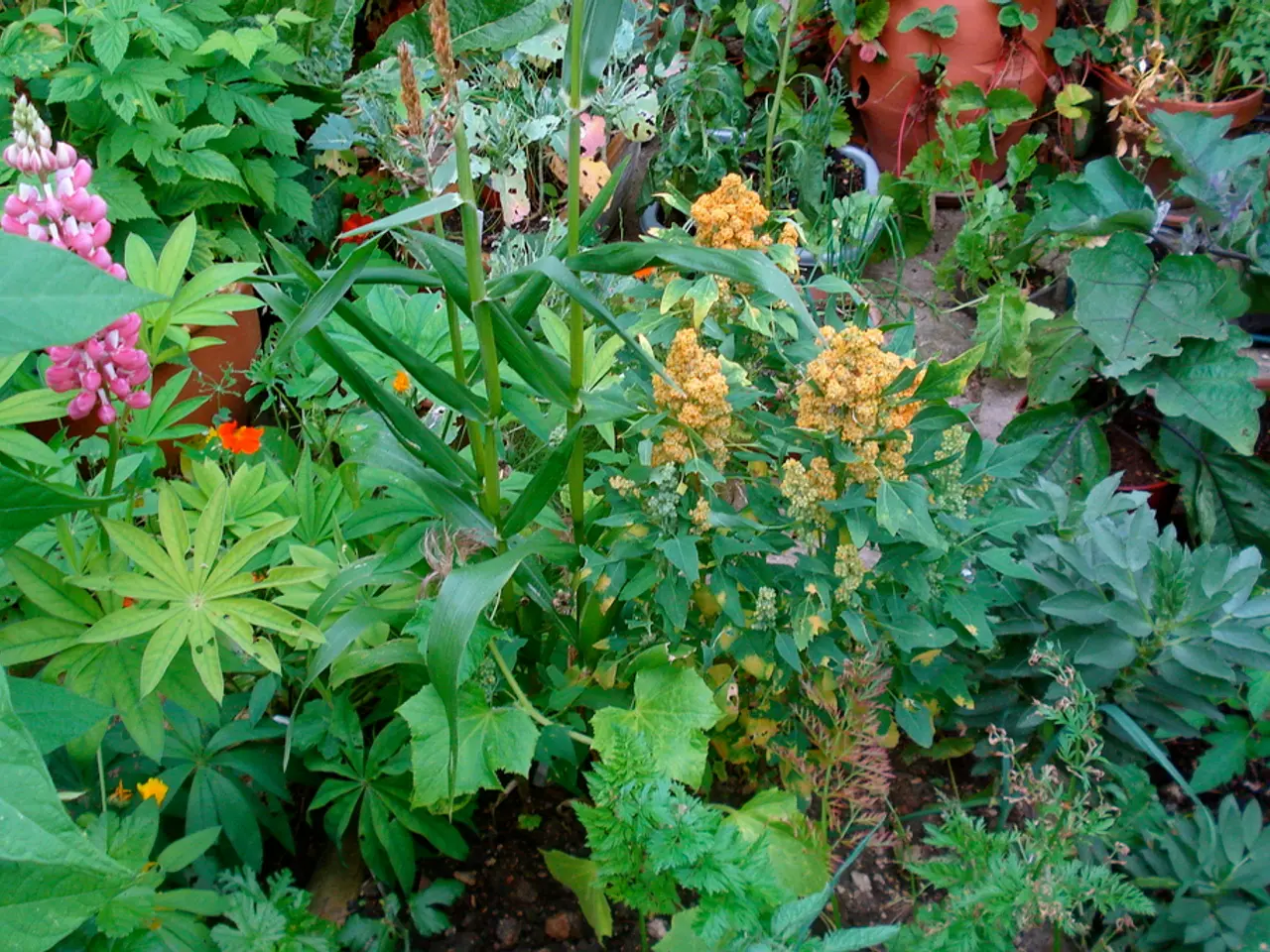Landscaping Fabric for Weed Control: Benefits and Drawbacks Explored
In the world of gardening, landscaping fabric has become a popular choice for many homeowners and garden enthusiasts. This woven plastic material, perforated with tiny holes, offers several benefits that make it an attractive solution for weed control, soil erosion, and long-term garden maintenance.
Weed Control
One of the primary advantages of landscaping fabric is its ability to act as a physical barrier, blocking sunlight from reaching weed seeds in the soil. This can effectively suppress weeds, reducing their ability to germinate and grow. Landscaping fabric is often used under gravel or mulch to prevent weed growth while allowing drainage.
Soil Erosion
Landscaping fabric can help stabilize soil, particularly on slopes or under hardscape like gravel. It protects soil and plant roots from erosion and displacement by wind or water. However, for very steep slopes (greater than 30%), alternative erosion control methods such as terracing or erosion control blankets are recommended over fabric.
Plant Growth and Soil Health
While fabric can conserve soil moisture by reducing evaporation, it also has notable drawbacks that may negatively affect plant health over time. The barrier limits soil exposure to air, rain, and sunlight, which decreases beneficial microbial activity and slows organic matter decomposition — both essential for nutrient cycling and soil fertility. It can cause soil compaction, reduce nutrient availability, and restrict water and airflow to roots, stressing plants and impeding growth.
Long-Term Impact and Maintenance
Over time, weeds and grasses may grow on top of or through degraded fabric, creating a tougher weed problem anchored by the fabric layer beneath. Its permanence makes it less suitable for frequently cultivated beds or vegetable gardens, where organic mulches or other weed control methods are better in maintaining soil health.
Cost and Eco-Friendliness
Landscape fabric bought in bulk isn't cheap but is quite durable, lasting for years. In contrast, using landscaping fabric can be the more affordable choice compared to regularly applying herbicides. Some landscaping fabrics are made from sustainable and recycled materials, making them eco-friendly with a degradation period of 5 to 10 years. Landscaping fabric made from biodegradable fibers breaks down more quickly than non-woven polyester or polypropylene.
Professional Installation
Professional installation of landscaping fabric is recommended for optimal results. Young plants growing through the fabric should be monitored to prevent choking. The fabric acts as a physical barrier that inhibits the breakdown of garden matter.
Conclusion
Landscape fabric provides effective short-term weed suppression and erosion control benefits, especially in permanent plantings and under hardscape. However, it can inhibit natural soil processes and harm plant growth over the long term by limiting airflow, water penetration, and nutrient cycling. Alternatives like organic mulches, cover crops, or native ground covers can be better for sustainable soil health and plant vitality in many garden situations.
Landscaping fabric, being utilized often in home-and-garden, enhances homeowners' lifestyles by offering short-term weed control and soil erosion solutions, primarily through its role as a physical barrier that prevents sunlight from reaching weed seeds and by stabilizing soil on slopes. On the other hand, long-term use might negatively impact plant growth and soil health due to limited exposure to air, rain, and sunlight, decreasing beneficial microbial activity and slowly decomposing organic matter.




